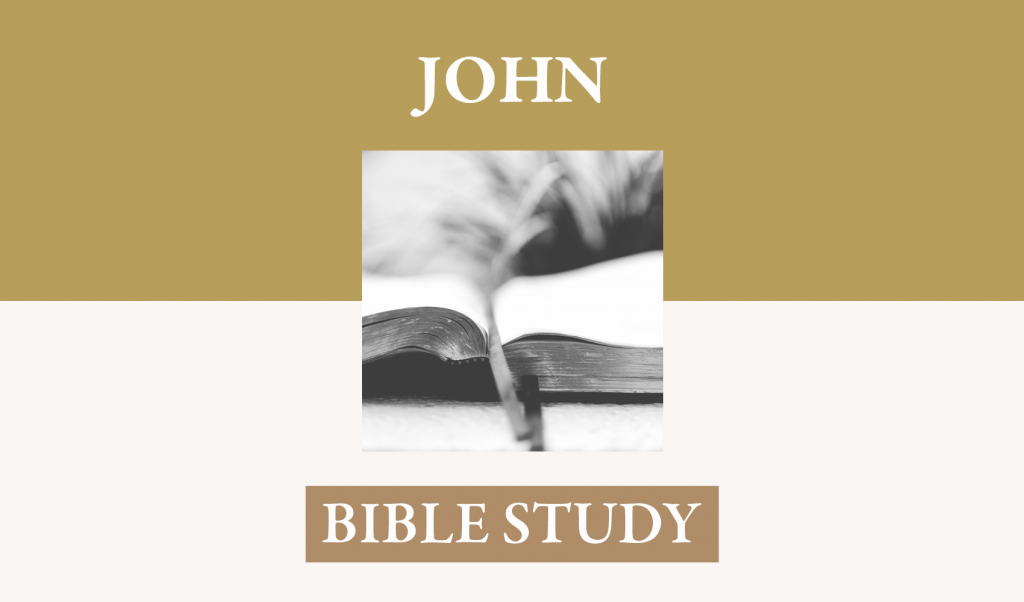John 21
I. An Identifying miracle 21:1-6—John indicates in verse 1 that this entire scenario was orchestrated by Jesus for an encounter that had several elements of previous events in it.
A. Seven Disciples decide to go fishing (3, 3)—Peter, Thomas, Nathanael, James and John, and two others.
Peter led the way, and they replied, “We will go with you.” It is quite striking how consistent this dynamic of Peter’s decisiveness followed by the others’ consent is played out in the gospels.
B. They catch nothing—They had fished all night, but every throw of the net, no matter which side of the boat, no matter the depth of the water, failed to bring in fish.
This failure was certainly the design of Providence in order to set the stage for this appearance and commissioning.
C. Just as morning broke, Jesus appeared and inquired about their success in fishing.
Had they caught anything? Unable to say anything other than the obvious, having nothing to show for all their efforts, they answered simply, “No.” In Luke 5:5, Peter told Jesus, Master, we have toiled all night and caught nothing.”
D. Jesus, in the imperative mood, tells them to cast the net on the right side of the boat, with the promise that they would find some.
Given the nature of all that is at stake in a life of Christian discipleship this is a small thing; it does illustrate, however, that a command from Jesus always implies the fulfillment of a promise.
E. Apparently, they immediately comply, and Jesus performs a miracle as in Luke 5:4–11 in a similar circumstance.
Remember also Jesus’ authority over the fish when he used one to provide a coin to pay the temple tax (Matthew 17:27).
F. This power over nature is similar to that manifested in the feeding of the 5000 in John 6:1–14 [Also Matthew 14, Mark 6, and Luke 9].
G. One might also observe that the fruit of their fishing totally depended on Jesus’ rule over nature.
Even so, his prior promise in Luke 5:10 that “from now on you will catch men,” totally depended on his rule over the covenant of grace.
II. A Joyful recognition—21:7–13
A. Recognizing the nature of this miracle, perhaps more quickly than the others, John told Peter, “It is the Lord.”
Peter lost all concern about the fish and, putting on his outer garment, jumped into the sea. This is probably the fourth time that Jesus has appeared in Peter’s presence since the resurrection (1 Corinthians 15:5; John 20:19, 26). It is the third time that he has appeared to all the disciples.
B. Jesus had prepared a fire and bread, and asked for some of the fish that he might prepare breakfast for these weary men. Several particularities of this event deserve mentioning.
1. John carefully points out that none of the men doubted who this was. They knew it was the Lord (12). Credible testimony as well as accumulation of evidence is an important aspect of the case that John builds throughout this book. One element of saving faith is the intellectual persuasion that the historical facts of the gospel are true. Scripture is abundant in giving sufficient reason to believe that Jesus is the Christ, that his death was designed to redeem sinners, and that the only hope of sinners for eternal life is found in his person and work. What is needed upon the mental persuasion is a heart enabling to repent and trust.
2. This was a charcoal fire; this was the kind of fire around which Peter warmed himself when he denied the Lord (John 18:18). This was purposeful by Jesus, doubtless, for such incidental things generate memories and emotion. His restoration and a concentrated personal commission would come in a setting reminiscent of his denial. The three denials are countered with the three questions, “Do you love me?”
3. It involved the feeding of the disciples with bread and fish, even as he had done in the feeding of the five thousand, and the four thousand after which they had conserved the remnant. He identified himself with the infallible ability to meet every need they had.
III. An Honest and Humble Appraisal of Love 15–17—We are not told if there was conversation during breakfast, but this post-breakfast conversation is highly encouraging.
A. Jesus asked Peter if he loved him more than the tools of his fisherman’s trade (“more than these”) which had given him a productive and secure life in the past. (15)
He uses the phrase agapas me. He is asking if Peter loves him irrespective of any personal interest or advantage. Does Peter love him sacrificially. Does he consent in his heart that Jesus rightly should be loved as the first table of the commandments requires of all rational creatures, “You shall love the Lord your God with all your heart, soul, mind, and strength.”
B. Peter responds, with recognition of Jesus’ knowledge of his heart, with the word philo, an exalted word for true love and friendship, but clearly not as unreserved and disinterested as agapas.
Peter knows that he has received from Jesus an undeserved call to discipleship, wonderful instruction, unreserved friendship, a promise of restoration, and that he already has confessed him as the Christ. He even has drawn his sword in a hostile company to defend Jesus. The denial and the sorrow from that was yet too vivid for him to exhibit the same kind of boast that seemed to generate his words of John 13:37—“I will lay down my life for your sake.” His choice to opt for a different word probably came from a well-established self distrust, and not from a conscious lack of genuine love. Peter uses agapate in 1 Peter 1:8 describing a believer’s lve for Christ. In 1 Peter 1:22, he uses both words [noun form Philadelphian and the verb form agapesate].
C. Jesus repeats the question a second time and Peter responds the same way (16).
D. Jesus repeats the question a third time using Peter’s response word. Peter became sad that Jesus had changed his word and asked about his love with phileo.
Jesus seemingly conceded to a lower type of affection falling short of Jesus’ intrinsic worthiness of worship. Peter affirms Jesus’ omniscience as a way of expressing his sincere awareness that he cannot speak without Jesus’ knowledge that his response is true. Peter’s grief over this change, however, would serve as evidence to his own conscience that he really did desire to answer unreservedly “yes” to the first question.
E. Though this episode was trying to Peter, Jesus saw his need of the uncovering of the layers of hesitance and doubt that assaulted his conscience.
He was making Peter verbalize the reality of his love for Christ. Jesus wanted Peter to overcome his halting in a willingness to affirm this love, that he might know that, though he was sinful and given to some degree of inconsistency, the love of Christ was inextricably rooted in his heart. He was illustrating the truth to which John later testifies, “We love, because he first loved us” (1 John 4:19).
1. Obviously John was privy to this entire conversation. He heard the way that Jesus sought to remove Peter’s hesitation and bring him to affirm his love for Jesus. The commission to Peter did not diminish even though Jesus conceded to the more pragmatic word.
2. Peter proclaimed with confidence that Christians indeed do love Christ with an undying and self-denying love in recognition of Christ’s intrinsic worthiness: “whom having not seen, you love. Though now you do not see him, yet believing, you rejoice with joy inexpressible, full of glory.”
3. Salvation itself, and thus the assurance of salvation, is bound up in the manifestation of love and the discernment of its reality. From this interview, John discerned this. This lesson, purified by the inspiration of the Holy Spirit, prompted John’s disquisition on love in 1 John 4:7–11 and 17-19. With agape love we have been loved, with agape love we love the brethren, and with agape love we love God. Assurance comes as we investigate our hearts and interrogate ourselves concerning this love. As Jesus asked Peter three times concerning his love, so must we pursue an answer to this question. We should give at least as much contemplation and set forth both the reasons and the extent of love by means of a reasoned affection Perhaps even in the poem of Elizabeth Barrett Browning we can finds means of expression as well as investigation.
How do I love thee? Let me count the ways.
I love thee to the depth and breadth and height
My soul can reach, when feeling out of sight
For the ends of being and ideal grace.
I love thee to the level of every day’s
Most quiet need, by sun and candle-light.
I love thee freely, as men strive for right.
I love thee purely, as they turn from praise.
I love thee with the passion put to use
In my old griefs, and with my childhood’s faith.
I love thee with a love I seemed to lose
With my lost saints. I love thee with the breath,
Smiles, tears, of all my life; and, if God choose,
I shall but love thee better after death.
4. We should indeed count the ways in which we have been loved by God and stir a reciprocal love: Election, incarnation, blameless life, substitutionary, death, propitiatory death, resurrection in a victory over death, a commission to be his witnesses, his ascension to the place of power, petition, privilege, and approval with his Father, his present advocacy for us even in our sin, and his coming again to receive us to himself. We should stir our hearts with these promptings to love, examine our hearts to find the fitting affection for the sovereign Lord of creation, providence, judgment, and redemption and in this way answer the question, “Do you love me?” and thus receive assurance of heaven and joy to suffer for his sake. For indeed, if we relish our love for him now we “shall love thee better after death.”
F. After each response, Jesus issued a call as he had to all on the occasion in Luke 14:25–27.
Jesus in these short words, “Tend my lambs,” gave a call to place the task of gospel ministry above their former life as well as above their present life. It is clear that much of what will be done in the proclamation of the gospel and the formation of the church will focus on Peter. See his actions in the book of Acts at Pentecost (Acts 2), distribution of gifts of benevolence and detecting purposeful deceit (Acts 5:3, 9), in Samaria (Acts 8:14ff), at the house of Cornelius (Acts 10), and at the Jerusalem council (Acts 15:7).
1. Jesus shows Peter that in the pursuit of this calling, he will indeed follow his master, for as Jesus was taken and put to death, so will Peter. He was early imprisoned with the threat of death but was delivered (Acts 5:18ff and Acts 12:1–19), but the time would come when he would not be delivered. The power of self-determination would give way to a necessary submission to a force outside his will. Someone else would dress him for execution and lead him to his place of death (18).
2. John’s comment is that in this death he would glorify God. The death of the saints is precious in the sight of the Lord and is a testimony to their preference for the presence of Christ to any of the supposed comforts and advantages of this life. “I have a desire to depart and be with Christ,” the apostle Paul wrote, adding, “which is far better” (Philippians 1:23).
3. The degree to which Peter was taught by the Lord to treasure the purifying effect of suffering may be seen in the rich doctrinal narrative of 1 Peter. The word “suffer” is mentioned 6 times in 1 Peter. “Suffered” is used 6 times, five times of Christ and once of Christ’s followers. “Suffering” appears one time, referring to the believers’ suffering for the sake of conscience. The plural noun “sufferings” is used three times all referring to the personal redemptive suffering of Christ. Christians suffer for well-doing, for the sake of righteousness, for the name “Christian,” and (probably referring to each of these, “according to the will of God” (1 Peter 4:19).
4. Immediately upon telling him that he would die at the hands of his enemies, of those that opposed the ministry to which he was being called, of those that would impose on him their will against his, Jesus reconfirms his call to Peter. This is a marvelous transformation that we can observe. When Jesus last made a prediction about Peter, it pointed to his failure to remain steadfast though Peter professed the courage to die; here we see Jesus predicting Peter’s courage to die, even though he is manifesting hesitance and having to be dragged along by Jesus’ insistent revelation of the love Peter has for Christ.
5. After telling him plainly that this call would cost him his life, Jesus reiterated, “Follow me.”
IV. Each must give an account
A. Peter seeks to divert Jesus’ intense scrutiny and commission to someone else, John 21:20–22.
In pointing to John, Peter recognized the peculiarly strong bond of friendship that existed between John and Jesus. He also anticipated that John will be deeply involved in the progress of the gospel during the apostolic era. (e.g. Acts 3:2; 4:13, 19; Galatians 2:9). After the death of Peter, it was John, as an old man, who was exiled to a lonely island and saw a revelation of the glorified, triumphant Christ, the perfect safety of those martyred for Christ, the certainty of all the elect of all ages finding undiluted, unalloyed joy in the presence of the glorified Redeemer forever, and a new indescribably glorious habitation for saints and holy angels in a new heaven and new earth. Each would have their particular assignment as to how they would live until that assignment was complete.
B. Jesus refuses to be diverted, and pursues Peter relentlessly, telling him not to be concerned with what his will is for John. He, Peter, will not give an account for John but only for himself (22).
C. John closes his narrative by identifying himself with that disciple that Jesus and Peter are discussing and affirming that his testimony is true.
One must see this affirmation in light of how John identifies the authority of the apostolic witness in 1 John 4:4–6. “We are of God. He who knows God hears us; he who is not of God does not hear us. By this we know the spirit of truth and the spirit of error.” The number of events that could have been recorded of the life of Jesus would indeed be massive, so John testified. That renders his process of selection all the more important and significant for the demonstration of his claim in 20:30–31—“But these have been written so that you may believe.”




















